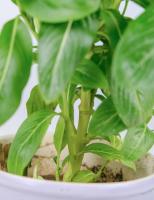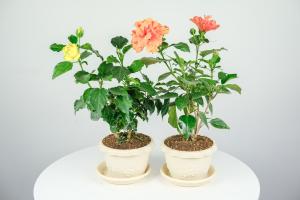Introduction
Fig trees, also known as Ficus carica, are a popular fruit tree that is native to the Middle East and Mediterranean regions. They have been cultivated for thousands of years and can now be found all over the world. Fig trees can be an excellent addition to any garden or orchard, but knowing where to plant them is essential for their success. In this article, we will discuss the best locations for planting fig trees.
Climate and soil requirements
Fig trees are adaptable to a wide range of soil types, but they prefer well-draining soil. It is essential to plant them in an area with good drainage to avoid waterlogging. Additionally, fig trees thrive in warm climates and require around 200-300 days of sunshine per year. They can tolerate cold temperatures, but the fruit may not ripen correctly in areas with cool summers. In general, fig trees grow best in USDA zones 7-11.
Sun and shade requirements
Fig trees require full sun to produce the best quality fruit. Plant them in an area that receives at least 8 hours of direct sunlight each day. However, they can tolerate some shade, particularly during the hottest part of the day. If you live in a particularly hot and dry area, consider planting your fig trees in a location that receives some afternoon shade.
Spacing and planting
Fig trees can grow up to 30 feet tall and wide, but they can be pruned to keep them smaller. When planting fig trees, it is essential to give them enough space to grow. They should be planted at least 15 feet away from any structures or other trees. Additionally, fig trees develop a deep root system, so it is important to plant them in a location where they will not compete with other plants for nutrients.
Protection from pests and diseases
Fig trees are relatively low maintenance, but they can be vulnerable to pests and diseases. Planting them in an area with good air circulation can help prevent disease. Additionally, applying a layer of organic mulch can help retain moisture and suppress weeds. Fig trees are susceptible to pests such as thrips and fig beetles, but these can be controlled with insecticidal soap or other organic pest control methods.
Conclusion
In conclusion, planting fig trees requires careful consideration of several factors. It is essential to plant them in a location with good drainage and full sun exposure. Additionally, fig trees thrive in warm climates and require adequate protection from pests and diseases. If you follow these guidelines, planting fig trees can be a rewarding and successful endeavor.

 how many times do yo...
how many times do yo... how many planted tre...
how many planted tre... how many pine trees ...
how many pine trees ... how many pecan trees...
how many pecan trees... how many plants comp...
how many plants comp... how many plants can ...
how many plants can ... how many plants and ...
how many plants and ... how many pepper plan...
how many pepper plan...





























